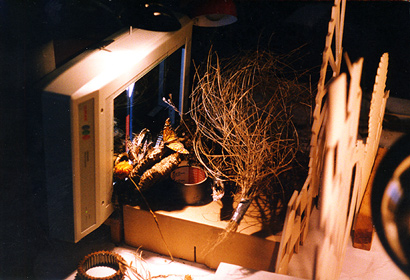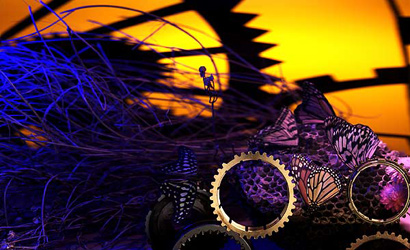
| |
| technic |
| artists |
| links |
| material |
| contact |
| home | bibliography |

Jeff Mihalyo's advices |
|
My scannography techniques vary but mostly I am interested in pushing the technology in multiple unconventional ways. Admittedly, this may risk proper functionality of my scanner, but so far has not, despite taking them apart and putting them back together again multiple times. That said, I buy oldscanners from used computer parts stores. Or get them from friends who are upgrading to newer ones. Currently I have six scanners for my scannography projects. (However I do not compromise my seventh "pro-grade" scanner because I need it for my professional work.) The particular look of my images are dependent on the type of scanners I
In the image above I present my more commonly used setup. My scanner is placed on its side in front of which I build a set using various objects and hand made components. I light the set with different types of light bulbs.
The scannograph above resulted from the set up photograph I have already provided. The image is not one of my stronger pictures, however it does illustrate the pushed color effect which resulted from changing the lighting between each pass. (The blue color is a standard bulb left on only during the blue pass, whereas the background is a combination of yellow and red passes. The butterflies are lit by the scanner bulb itself and therefore appear "color correct."
|
• Chris Staebler's
layering method >

